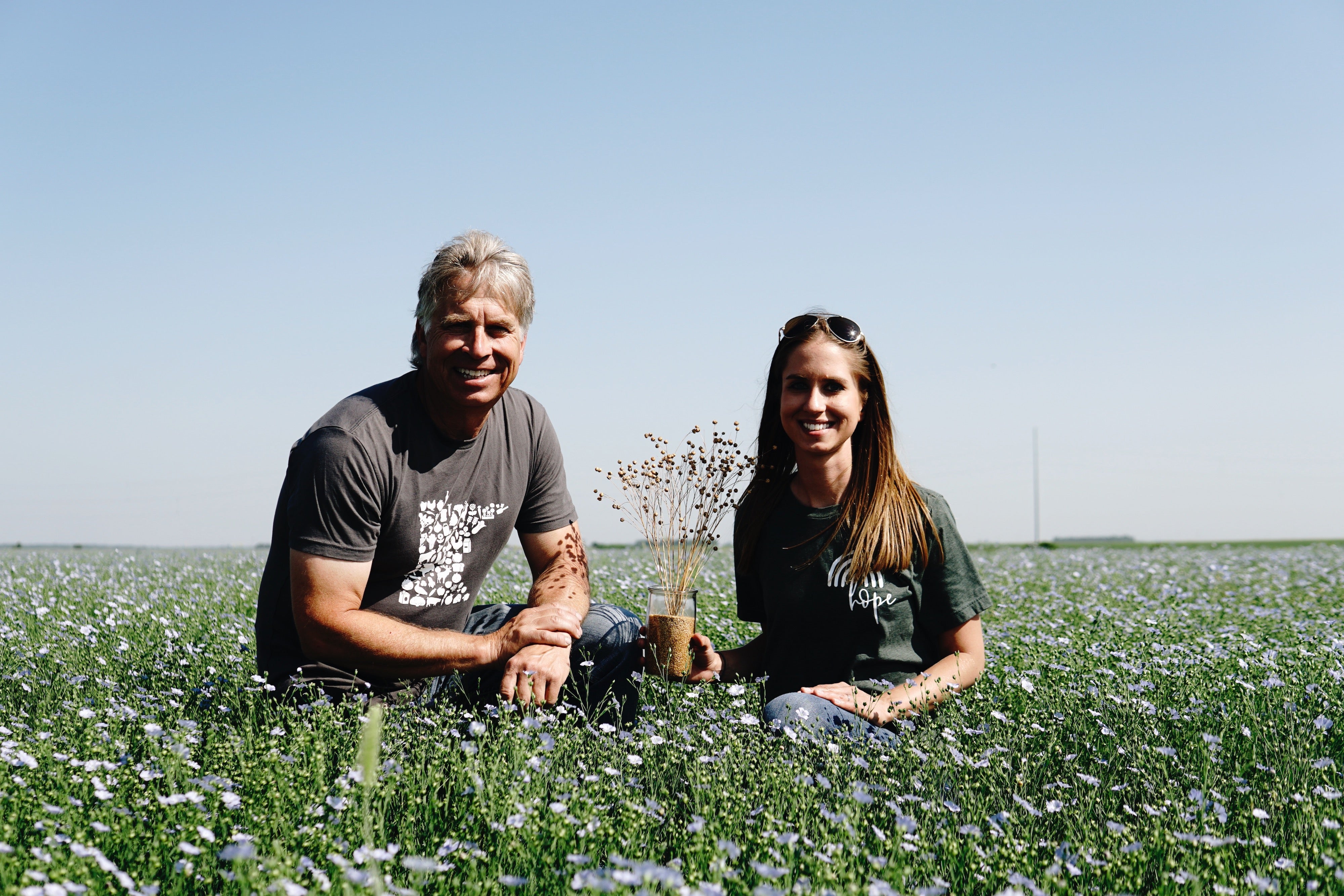On a hot, sunny July day, rolling through back roads of the fertile Red River Valley just south of Moorhead, Minnesota, you'll see fields of green (corn + soybeans) as far as the eye can see. If you're in the right place at the right time, a lake may suddenly catch the corner of your eye. Upon further observation, though, it is no lake at all. It's a 50 acre field of blooming flax covered in beautiful tiny blue flowers. When we finally saw the blooming flax for the first time ourselves, we knew we had reached our destination: Askegaard Organic Farm to visit with father-daughter farming duo Mark and Beth.

In 2019, Seven Sundays started directly purchasing organic golden flax from Askegaard, but it wasn't until this year that we made it for a farm + field visit at the most coveted time: while the flax is in bloom. Sometime in between seeding and harvest, there is a peak week in which the flax flowers daily in response to day length: opening in the morning and closing by late afternoon.
"Come harvest, the beautiful blue flowers are shed and are replaced by bolls (circular capsules filled with up to 10 seeds). When shaken, the seeds can be heard moving inside of the boll, much like a rattle. Once separated from the boll, flax seeds are visibly flat, smooth and taper to a point on one end." -Askegaard
We learned a lot about flaxseed on our visit: how it contains healthy, essential fats missing in most modern diets, how it is rich in both soluble and insoluble fiber, and a host of other health benefits. But what was most impactful was learning about how flax fits into a healthy farming system; one that works not only to produce the healthiest possible crop for our bodies, but that actively contributes to the health of our soils for generations.

As a part of their holistic, organic approach to farming, Askegaard uses cover cropping, companion planting, and crop rotations to help create biodiversity in the soil, attract beneficial insects/pollinators, and suppress weeds. We learned that on the farm, flax is typically planted after wheat, when nitrogen levels are lower and there's less weed pressure.
As for what flax does for the soil during its rotation? A lot. Flax doesn't require as many nutrients or inputs to grow healthily, is very drought resistant, and creates deep tap roots. (Check out the roots photo above). In other words, flax is a core part of the resiliency of Askegaard's organic farm that gives more than it takes.
Decades (read: half a century and beyond) ago, flax was grown readily across Minnesota and neighboring states. It was a vital source of both fiber (linen) for clothing and oilseed. Eventually, corn and soy became the norm for most farms. Flaxseed, flax oil, and flax linen may be starting to come back into the spotlight, but production is still rather limited.

Farms like Askegaard are vital for companies like ours seeking locally, responsibly grown ingredients that not only add a big dose of nutrition to our muesli mixes, like Wildberry Maple, but leave the soil in rich, thriving condition for seasons to come. We're proud to incorporate their beautiful organic flaxseed in many of our mixes and hope to partner on additional crops in the future that become a thriving part of their farm and our recipes.
Mark's parting sentiment: Is it easy to farm without chemicals? No. Is it worth it? Absolutely. We'll clink our breakfast spoons to that.

